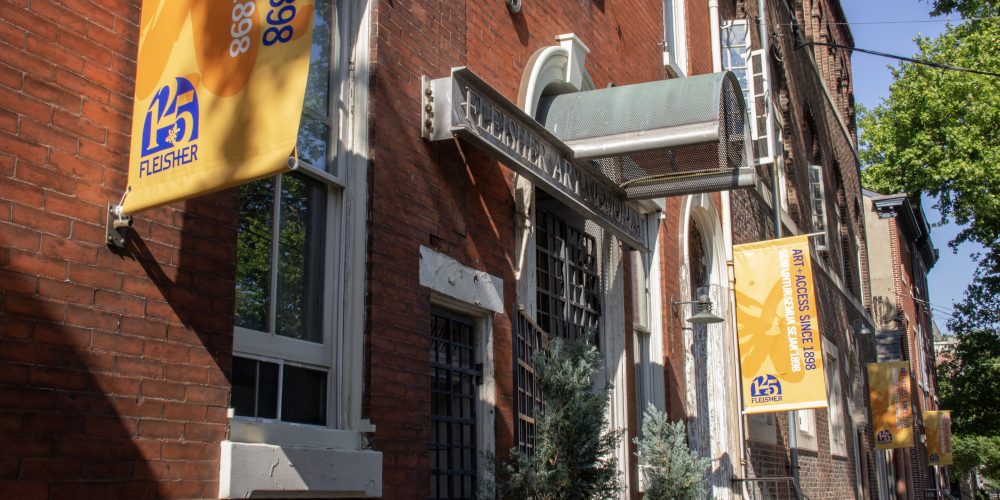
The Fleisher Years Chapter 9: The Doors on Catharine Street (1916– )
In 1916, Fleisher Art Memorial, then the Graphic Sketch Club, moved into 713-715 Catharine Street after previously occupying several other buildings in the Queen Village and Bella Vista neighborhoods. The building previously had been Saint Martin’s College for Indigent Boys, a school created to educate young men in need and supported by the adjacent Church of the Evangelist.
Today, Fleisher Art Memorial is comprised of an eclectic mix of historic buildings located on the same urban block. Over the years, the campus has expanded to include the former Romanesque Revival church, a series of rowhouses, and across the parking lot, a former funeral home. Fleisher now consists of over 30,000 square feet of occupiable space stretching across seven buildings, with studios, galleries, and administrative functions of the institution located on the 700 block of Catharine Street.
In classical Roman religion, a genus loci was recognized as the protective spirit of a place. It was often depicted in religious iconography as a figure holding attributes such as a cornucopia, libation bowl, or snake. In contemporary usage, genius loci usually refers to a location’s distinctive atmosphere or the “spirit of place,” rather than a guardian spirit.
Considering this concept of genus loci in relation to Fleisher Art Memorial, the institution’s eclectic but distinctive mix of buildings feels like both its greatest gift and biggest challenge. The layered history of the campus is a testament to the mission and ambition of founder Samuel S. Fleisher, leaving an indelible impression. The former church—known as Fleisher’s Sanctuary—serves as a classroom, performance venue, and event space. While the Sanctuary is often described as the “heart of the campus,” the studio spaces located in the former school and retrofitted rowhouses are perhaps the rooms closest to Fleisher’s mission. These rooms provide space for the instruction, production, and discussion of art for students of all ages. Across the parking lot, the former funeral home currently houses Fleisher’s darkroom facilities and printmaking studios.
As Christian Norbert-Schulz wrote in his 1980 book, Genus Loci: Toward a Phenomenology of Architecture, “the spaces where life occurs are places, in the true sense of the word. A place is a space which has a distinct character. Since ancient times the genius loci, or ‘spirit of place,’ has been recognized as the concrete reality man has to face and come to terms within his daily life. Architecture means to visualize the genius loci, and the task of the architect is to create meaningful places, whereby he helps man to dwell.”
In the case of Samuel S. Fleisher and the Graphic Sketch Club—now Fleisher Art Memorial—the layered history and unique physical footprint of the campus has largely been a story of adaptation and growth. But since the resulting collection consists of multiple individual buildings which have been renovated to function as one interconnected—and at times, labyrinthine—interior, the street front maintains the multiple entrances and façade typologies of the original buildings. While this allows the campus to blend into the surrounding neighborhood, it can also be disorienting to newcomers as each original building still has its own “front door.”
Architecturally speaking, the maze of our buildings has long been—and will continue to be—a topic of conversation in terms of how Fleisher might evolve in terms of increased accessibility and flexibility. But in this moment, as we celebrate Fleisher’s 125th anniversary, the occasion provides an opportunity to reflect upon how these individual buildings have come together to convey a singular and very special sense of place: a creative hub, a second home. What does this place mean to you?


To get updates on events, exhibitions & class information:
"*" indicates required fields